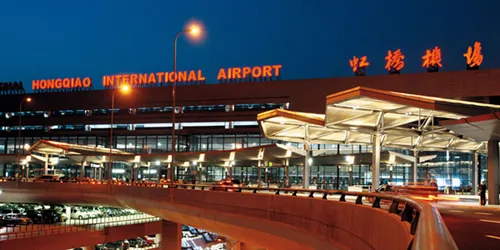Shanghai, China
July 26, 2023
Leveraging innovative artificial intelligence and machine learning solutions from ADB SAFEGATE, SHIA-operated airports will more accurately predict Estimated Time of Arrival (ETA) to improve apron operations and passenger services.
Shanghai Hongqiao International Airport (SHA), a leader in innovation and artificial intelligence (AI) and machine learning (ML) best practices in China, has chosen ADB SAFEGATE’s advanced technologies to improve daily operations. SHA will use ADB SAFEGATE AI-powered solutions coupled with ML algorithms to improve apron efficiency, stand usage and passenger experience at reduced operational costs.
While enhancing its previously installed Airport Operational Database/Resource Management System (AODB/RMS), ADB SAFEGATE built a new prediction model applying advanced AI/ML techniques and data analytics which will help calculate an aircraft’s ETA and pre-allocate flight stands. It will reduce unreasonable stand adjustments and improve the airbridge usage rate, lowering overall security risks caused by flight conflicts.
Prior to the COVID pandemic, SHA was facing multiple operational challenges - from increased flight traffic and crowded aprons to providing improved services to passengers while maintaining safety. Accommodating new flights looked unlikely due to limited resources, which was leading to increased costs and constrained airport revenue.
“Thanks to ADB SAFEGATE’s AI prediction algorithm, 75% of our flights now land within 30 minutes of their scheduled landing time. This improved accuracy has directly benefited our pre-allocation of stands, reducing the need to make stand changes by 25%. This has decreased security risks caused by flight conflicts as well as allowed more passengers to avail airbridges rather than wait for buses." said Mr. Wang Zhi, Section Manager of SHA ITC.
“As an in-house vendor serving SHA for more than 15 years, we understand the operational challenges at SHA,” said Peng Guan, Vice President, China at ADB SAFEGATE. “With operating pressure increasing, airports must make full use of limited resources. We have built an evaluation mechanism of ground operation efficiency through intelligent data analysis that has improved the allocation of stand resources, resulting in the capability to manage, and even accommodate, more flights. Digital technologies are playing a key role in optimizing the operational efficiency of airports and we hope to continue to build long-term partnerships with customers in the region to support their transformation on this path.”
